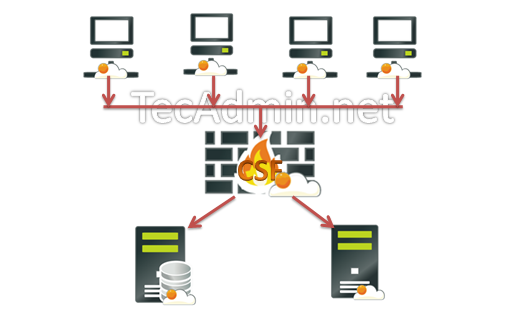LFD stands for Login Failure Daemon. Its an process that actively monitors the log file for user login entries and send the alerts to admin on basis of configured rules. read more about CSF.

This article will help you to install CSF on Linux system with very easy steps.
Step 1: Download CSF Source Archive
Download latest CSF archive source code from its official site and extract on your Linux box. Then extract source code.# cd /opt # wget http://download.configserver.com/csf.tgz # tar xzf csf.tgz
Step 2: Install CSF
CSF provides and bash script to easily install it on any operating system. This script automatically detect your operating system and install CSF accordingly. Run install.sh script.# cd /opt/csf # sh install.sh
Step 3: Test iptables modules
Run the csftest.pl perl script to verify if all the required iptables modules are installed on your system to make is proper working.# perl /usr/local/csf/bin/csftest.pl
Testing ip_tables/iptable_filter...OK Testing ipt_LOG...OK Testing ipt_multiport/xt_multiport...OK Testing ipt_REJECT...OK Testing ipt_state/xt_state...OK Testing ipt_limit/xt_limit...OK Testing ipt_recent...OK Testing xt_connlimit...OK Testing ipt_owner/xt_owner...OK Testing iptable_nat/ipt_REDIRECT...OK Testing iptable_nat/ipt_DNAT...OK RESULT: csf should function on this server
Step 4: Enable and Restart CSF
After successfully installing CSF on your system, You need to change following setting in csf.conf to enable CSF.# vim /etc/csf/csf.conf TESTING=Now restart CSF firewall to reload new changes using following command.0
# cd /etc/csf # csf -r
Prevent DDOS Attacks
Configure CSF+LDF to prevent server from DDOS attacks. To enable it edit /etc/csf/csf.conf and update following settings.CT_LIMIT = "20"
CT_INTERVAL = "30"
CT_EMAIL_ALERT =1
CT_PERMANENT = 1
CT_BLOCK_TIME = 1800
CT_PORTS = "22,23,80,443"
Comments
Post a Comment